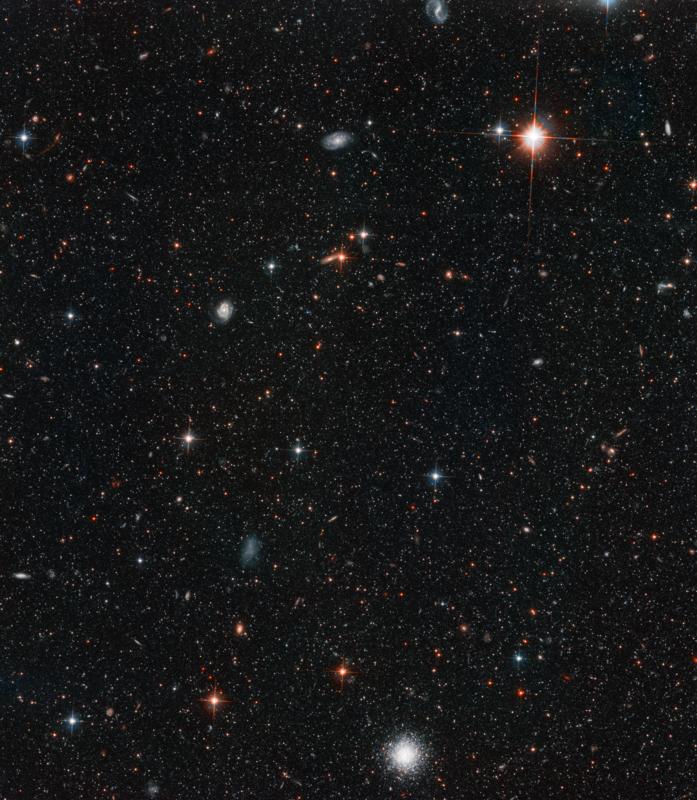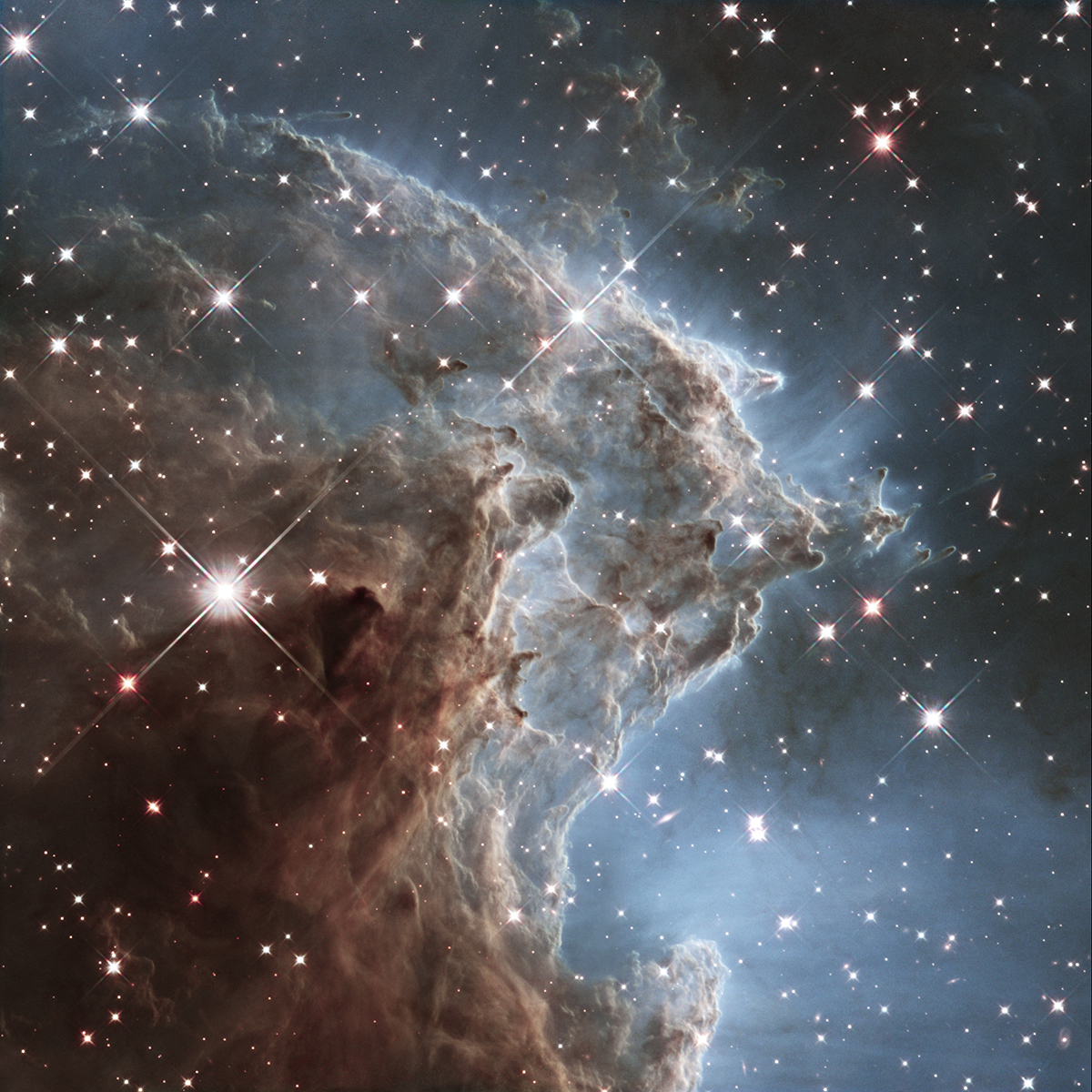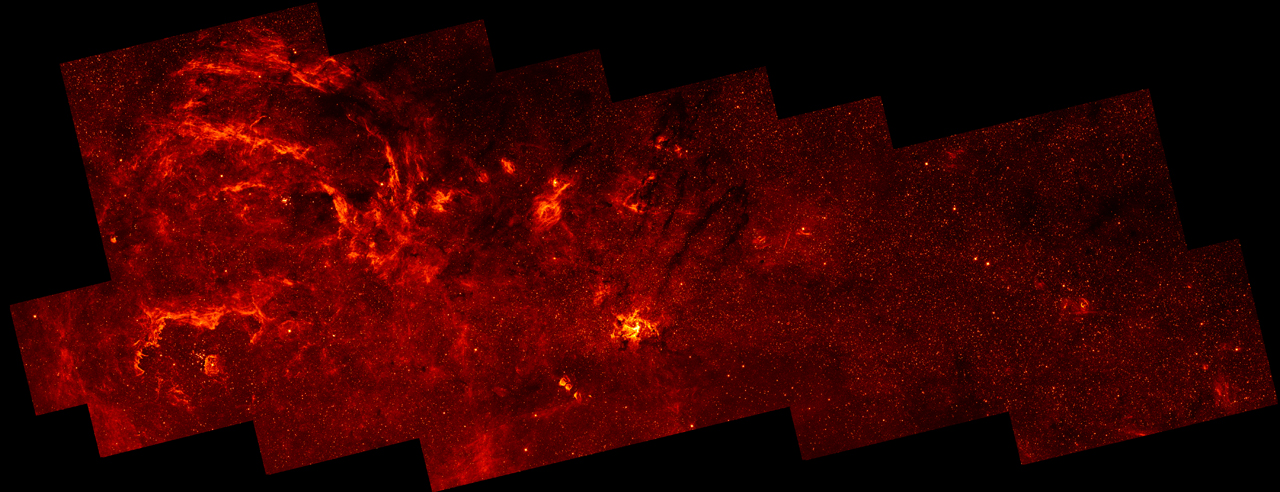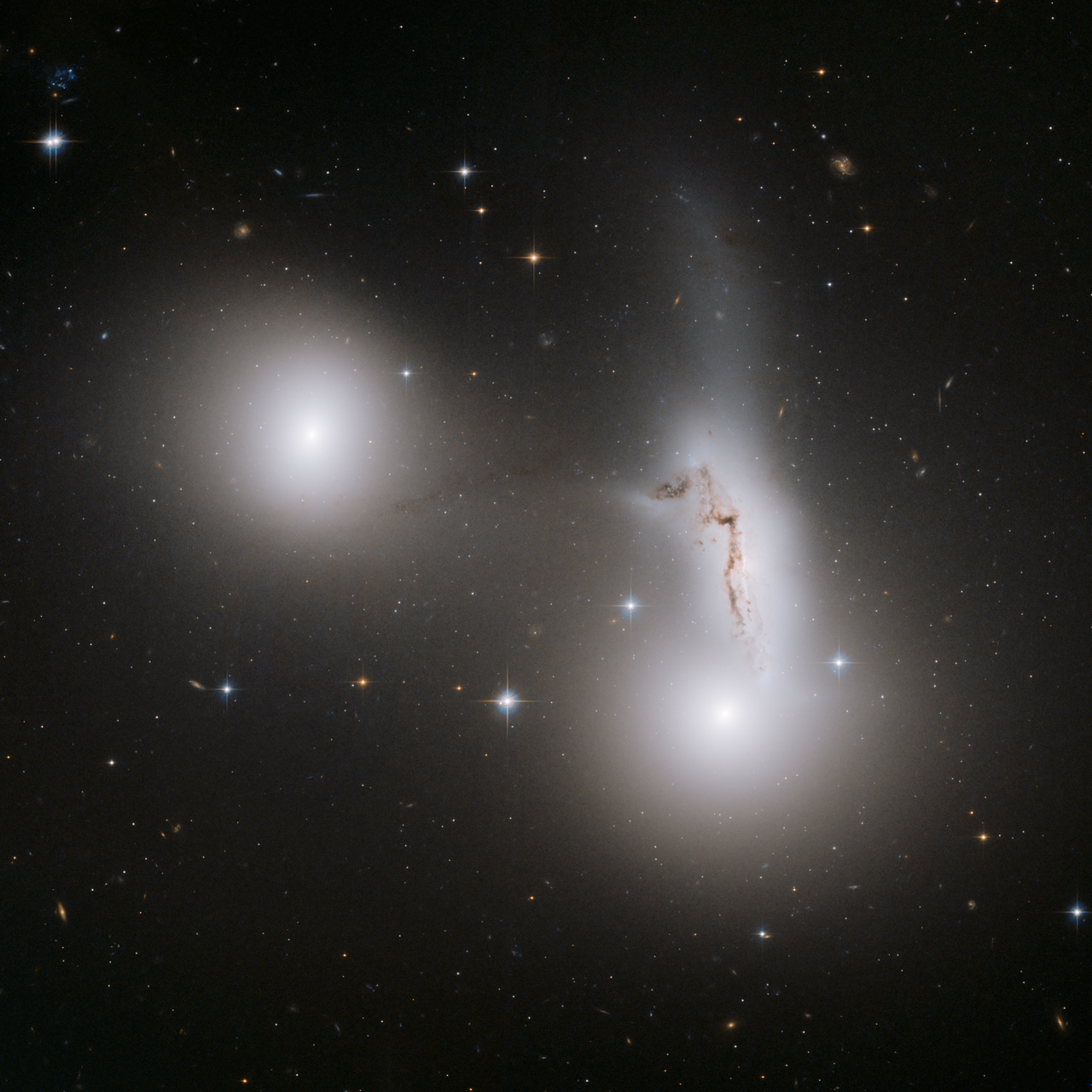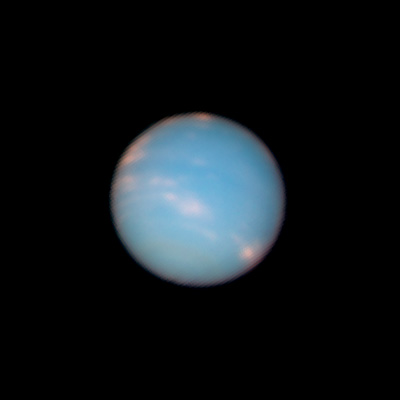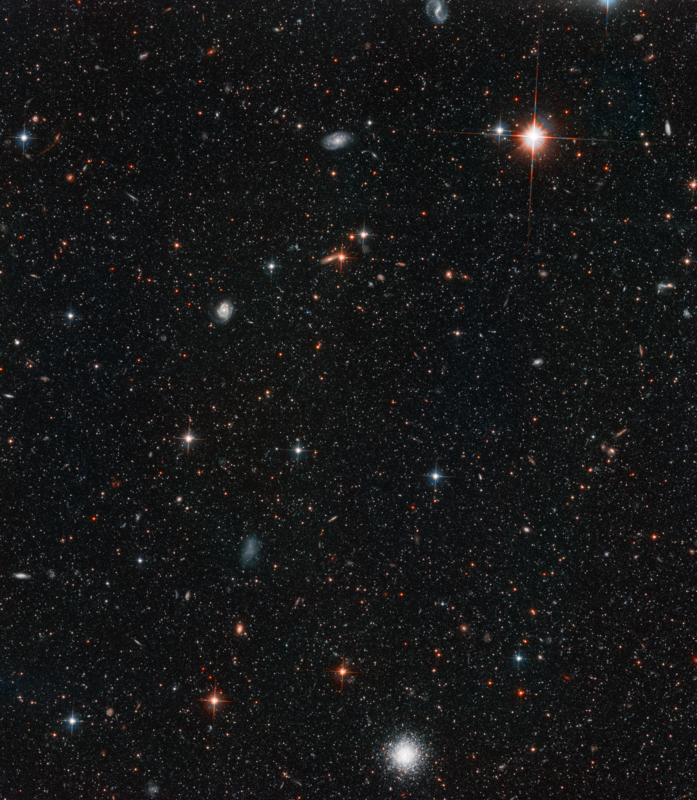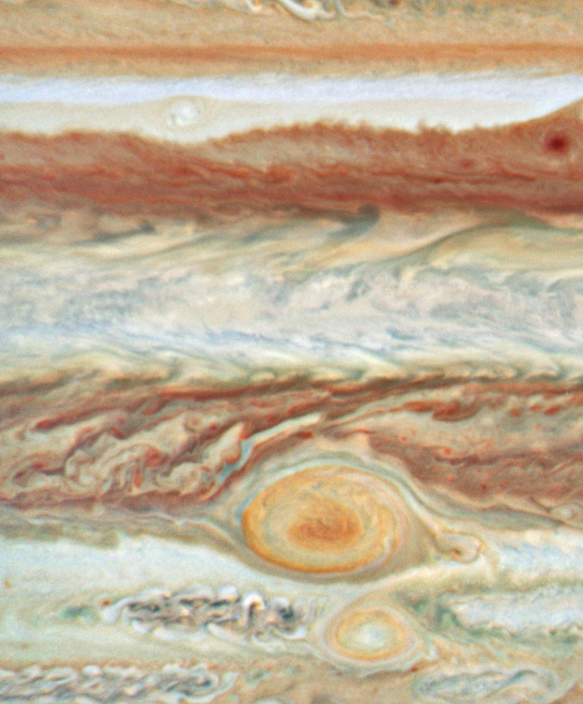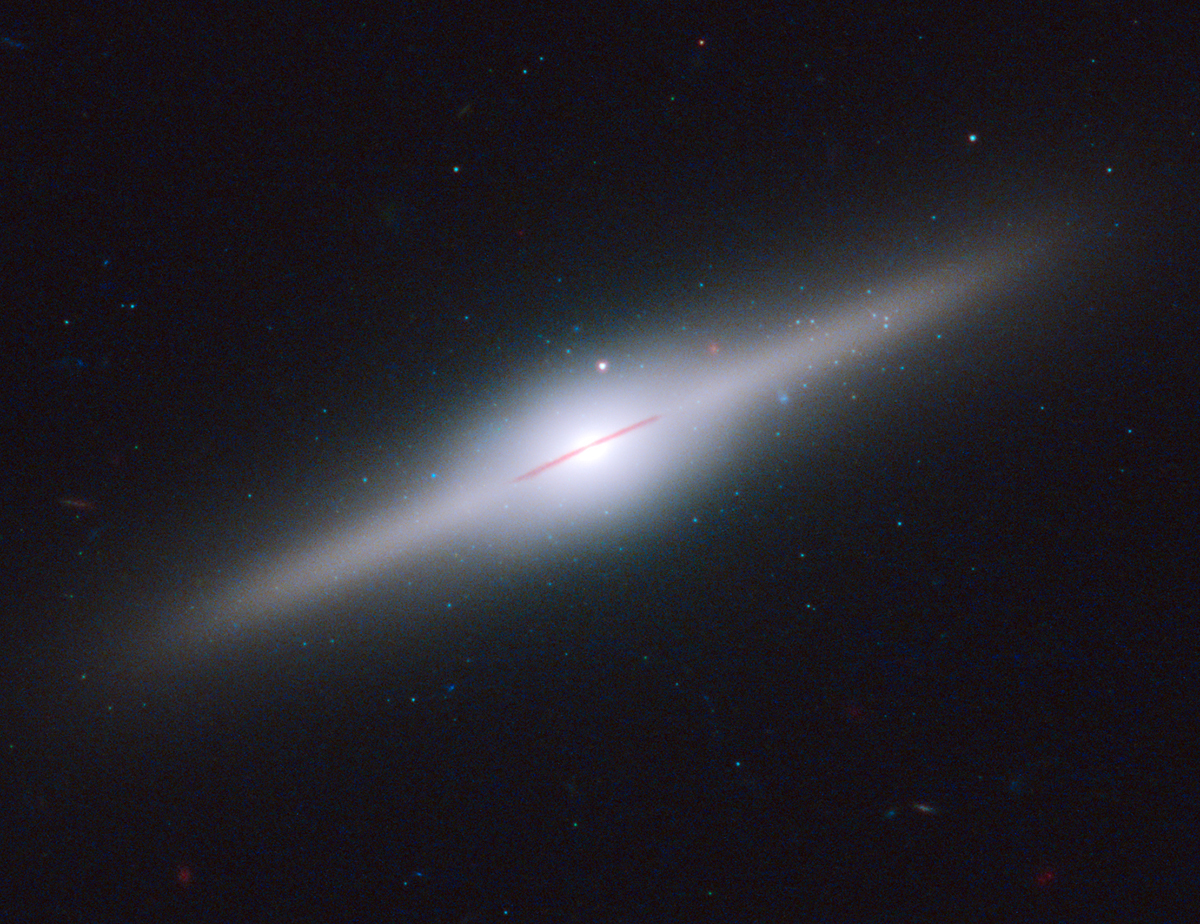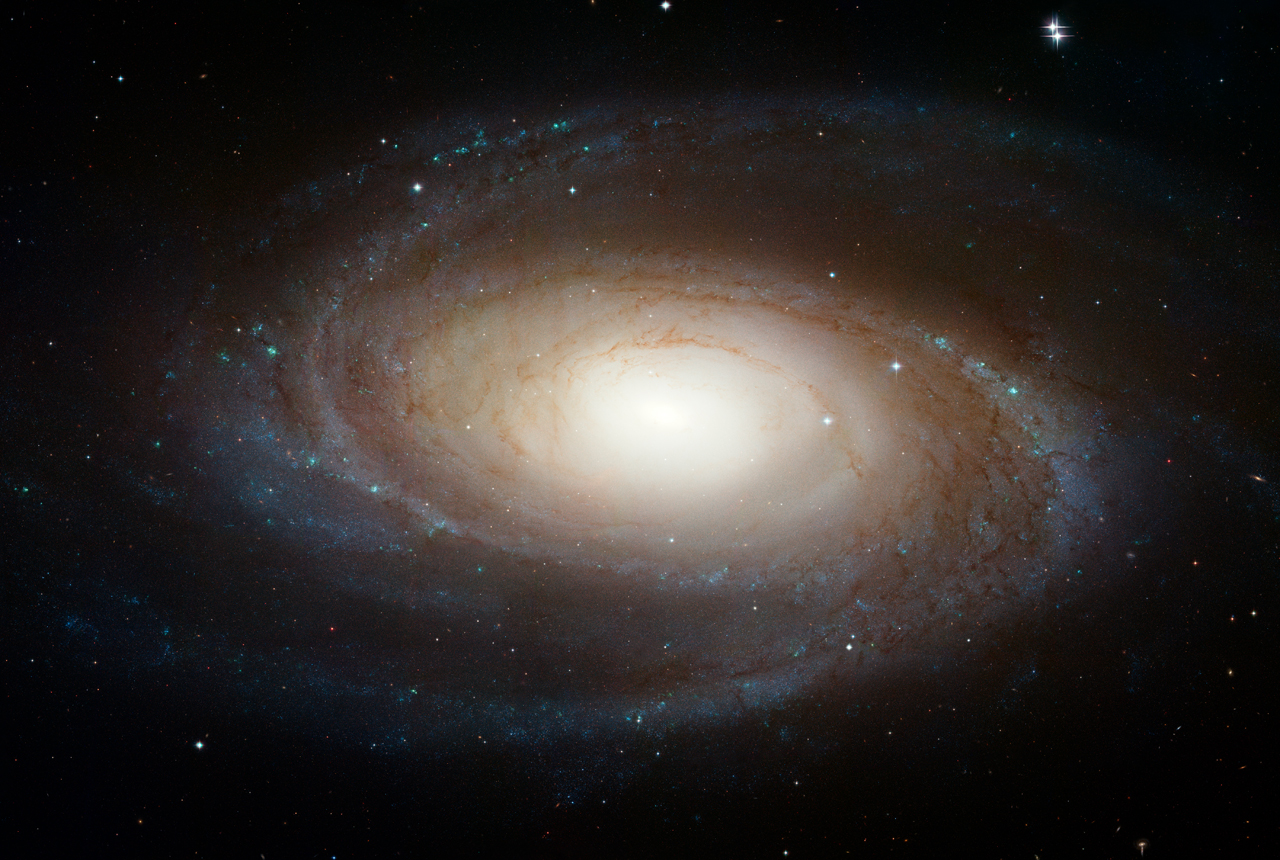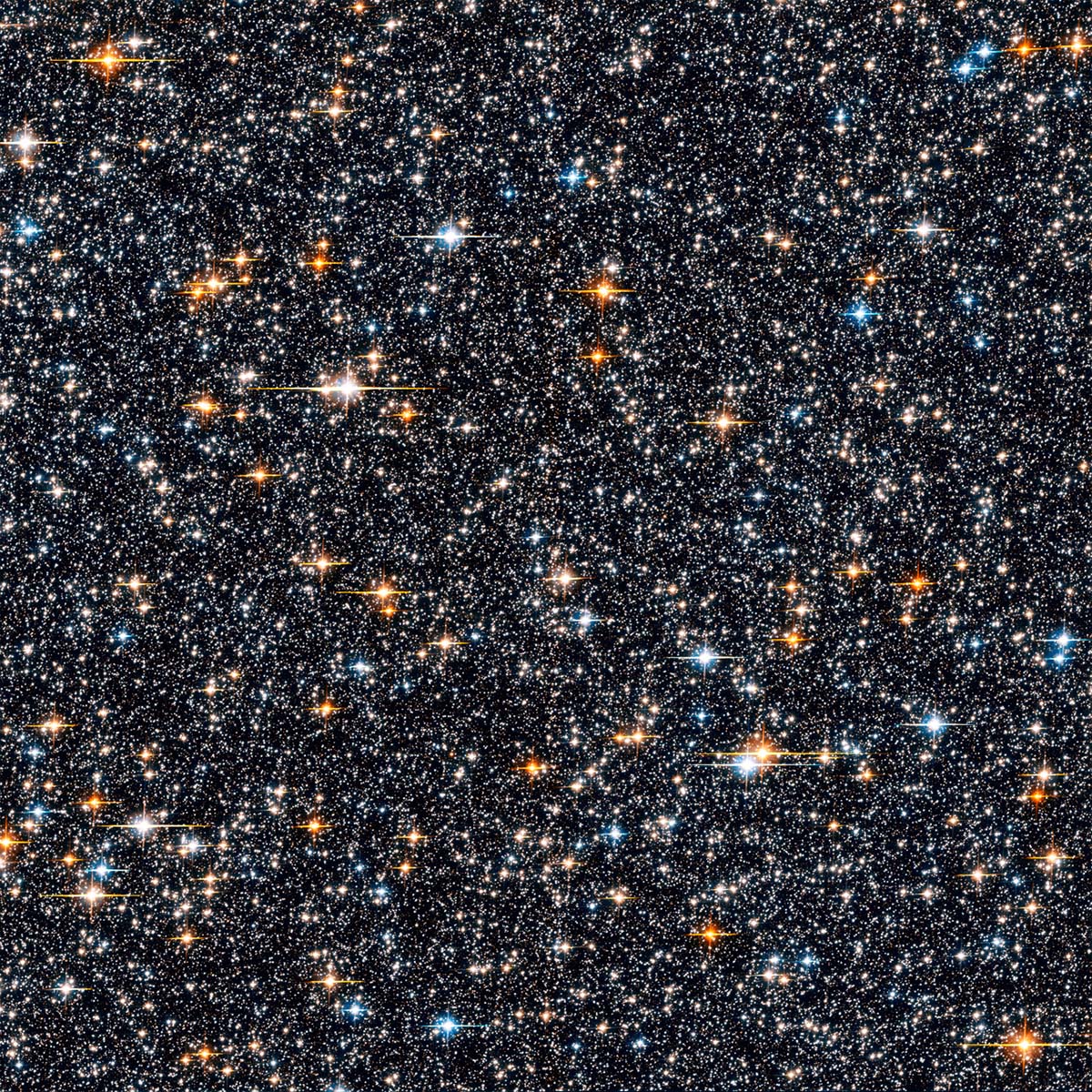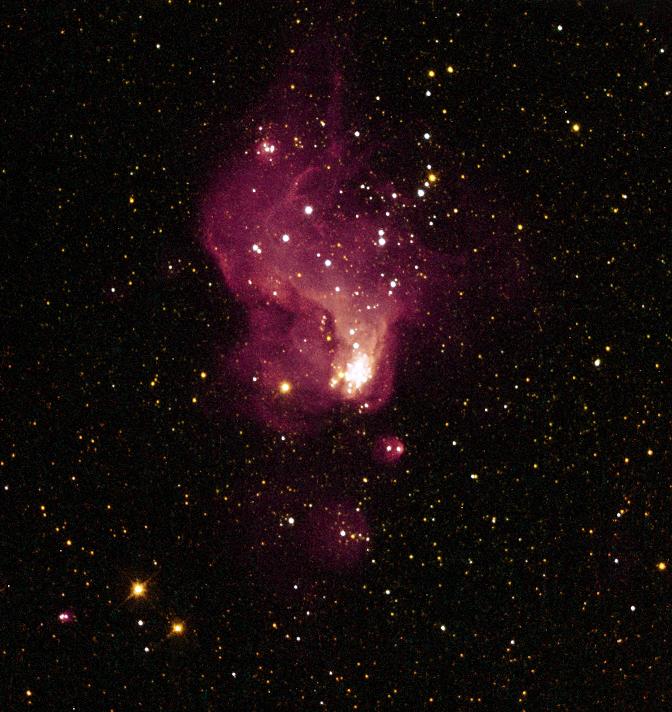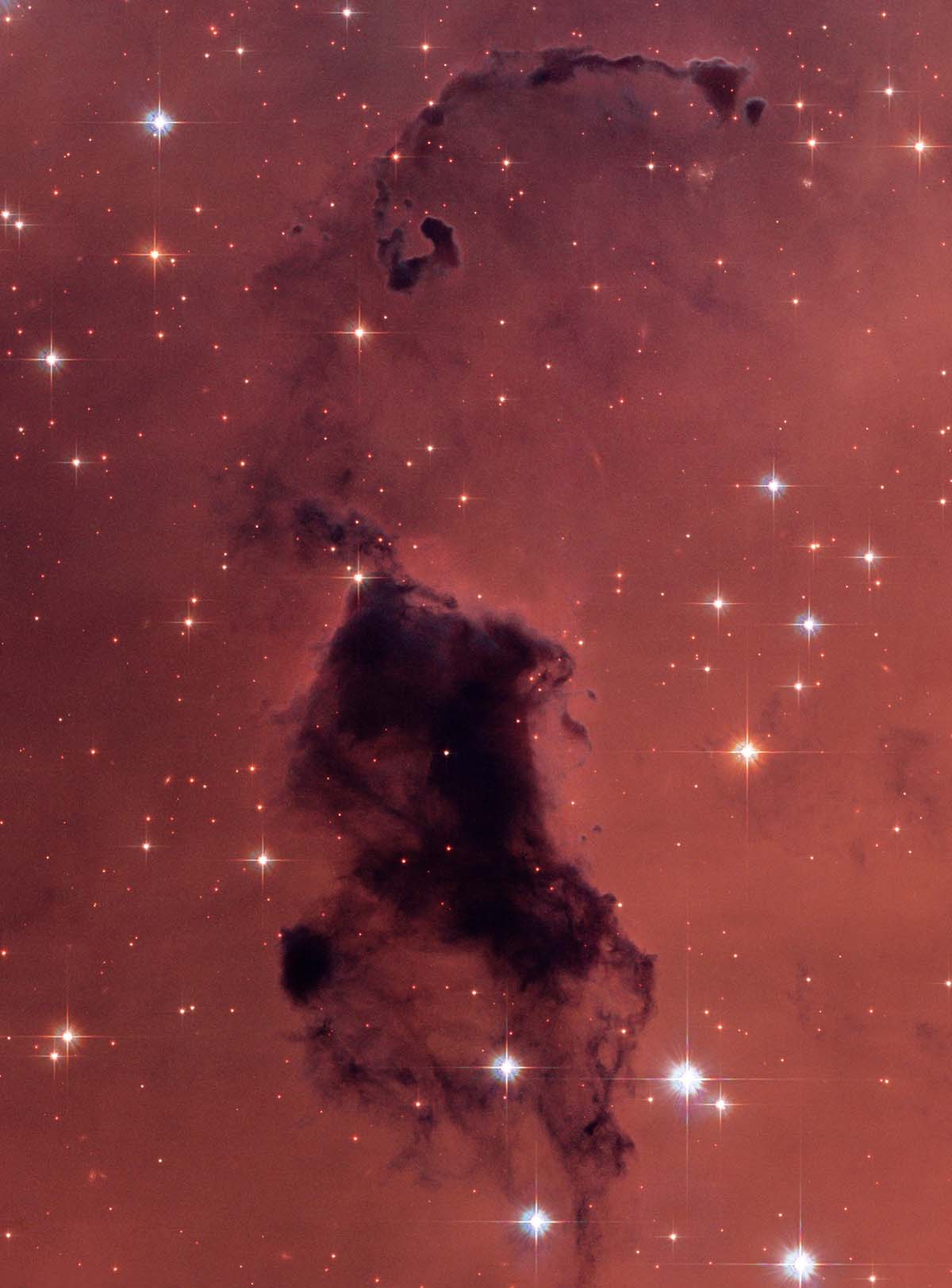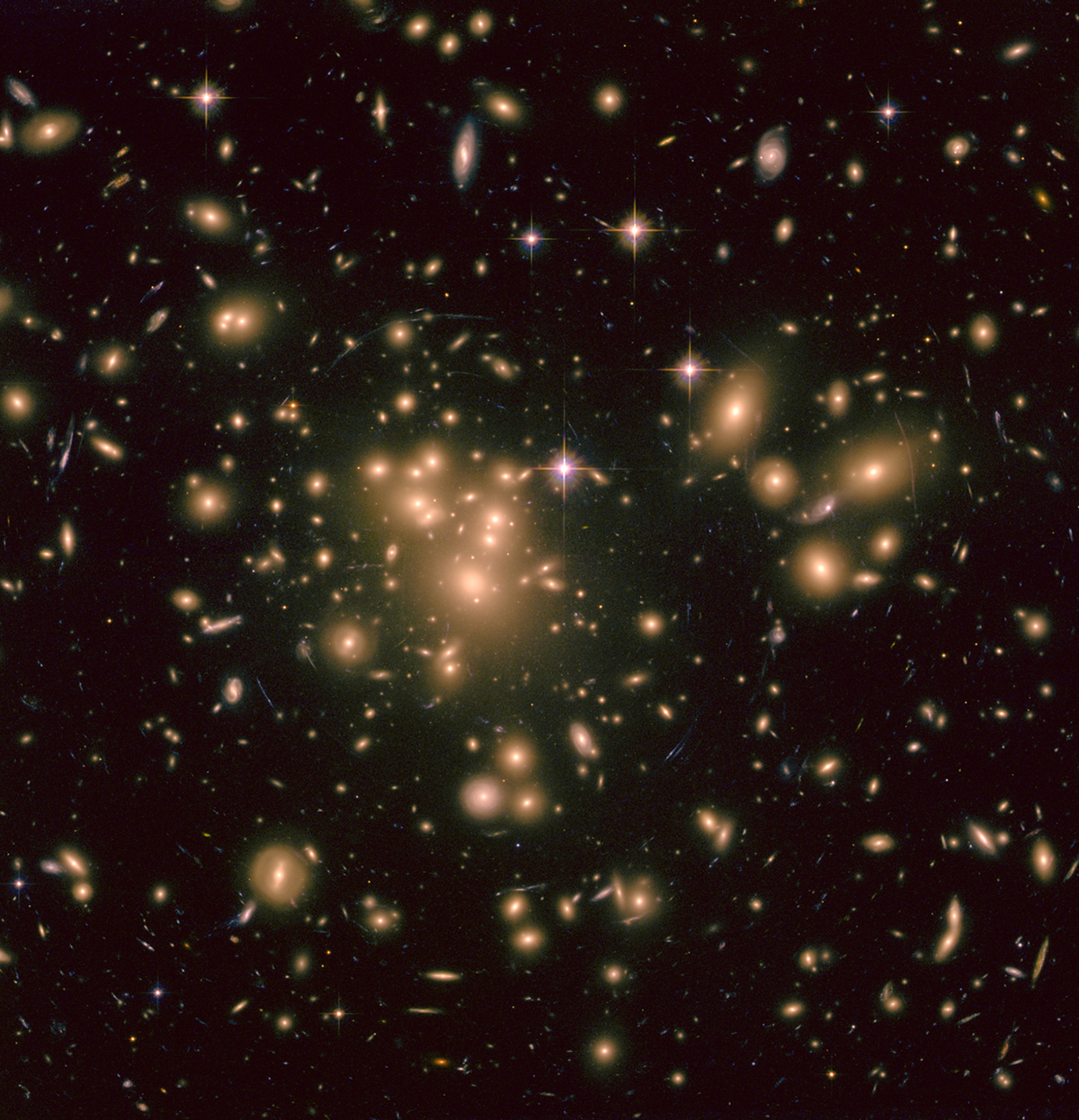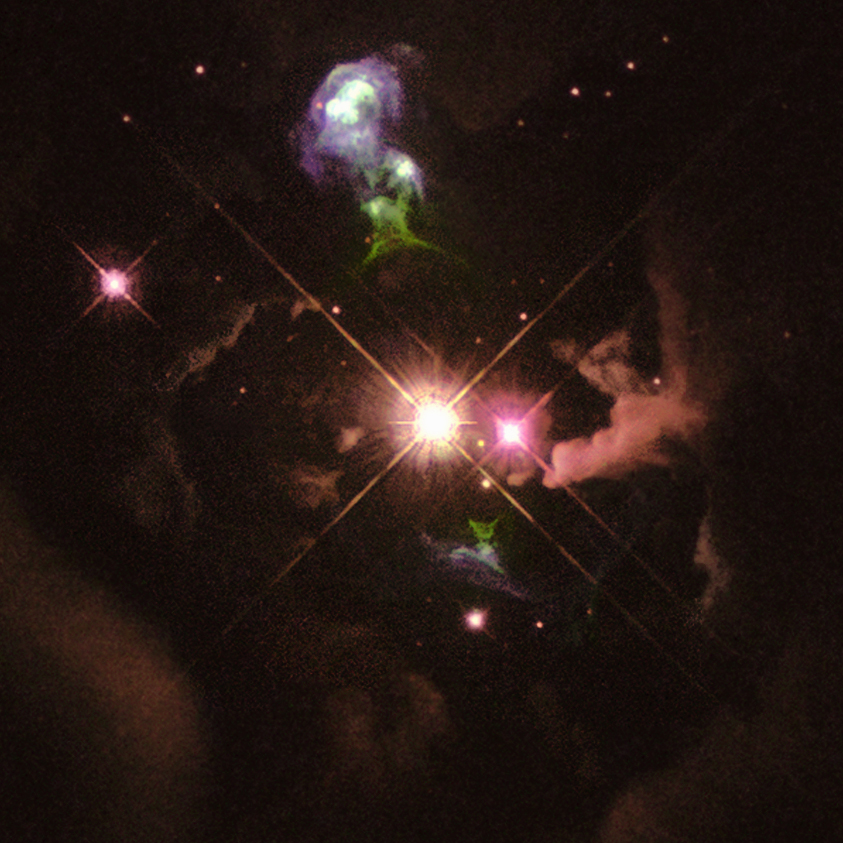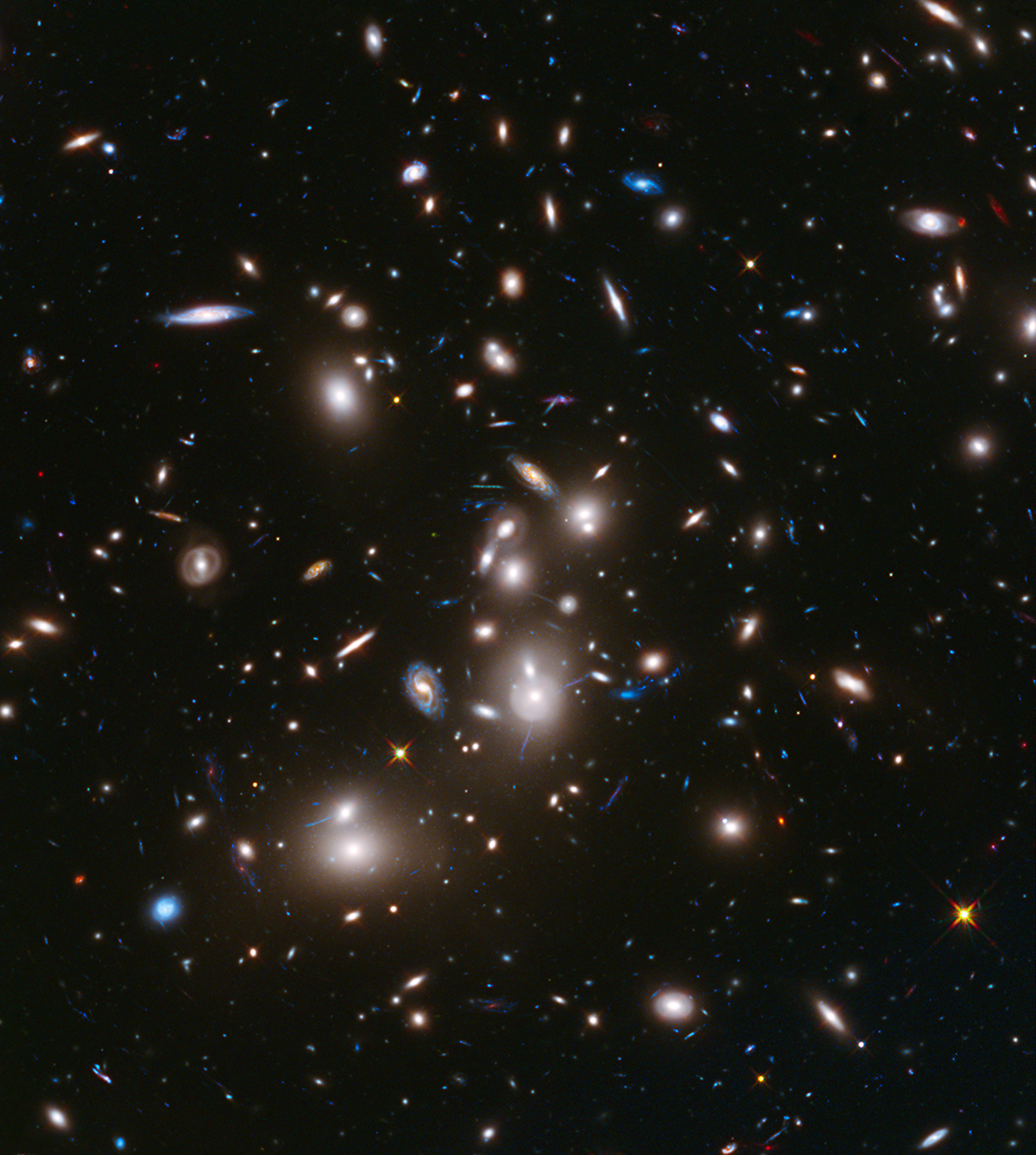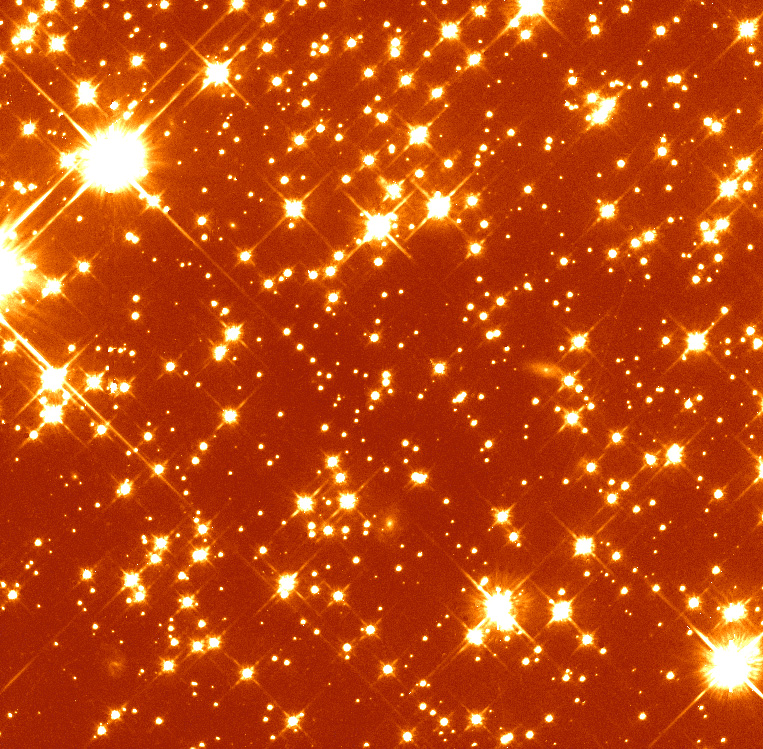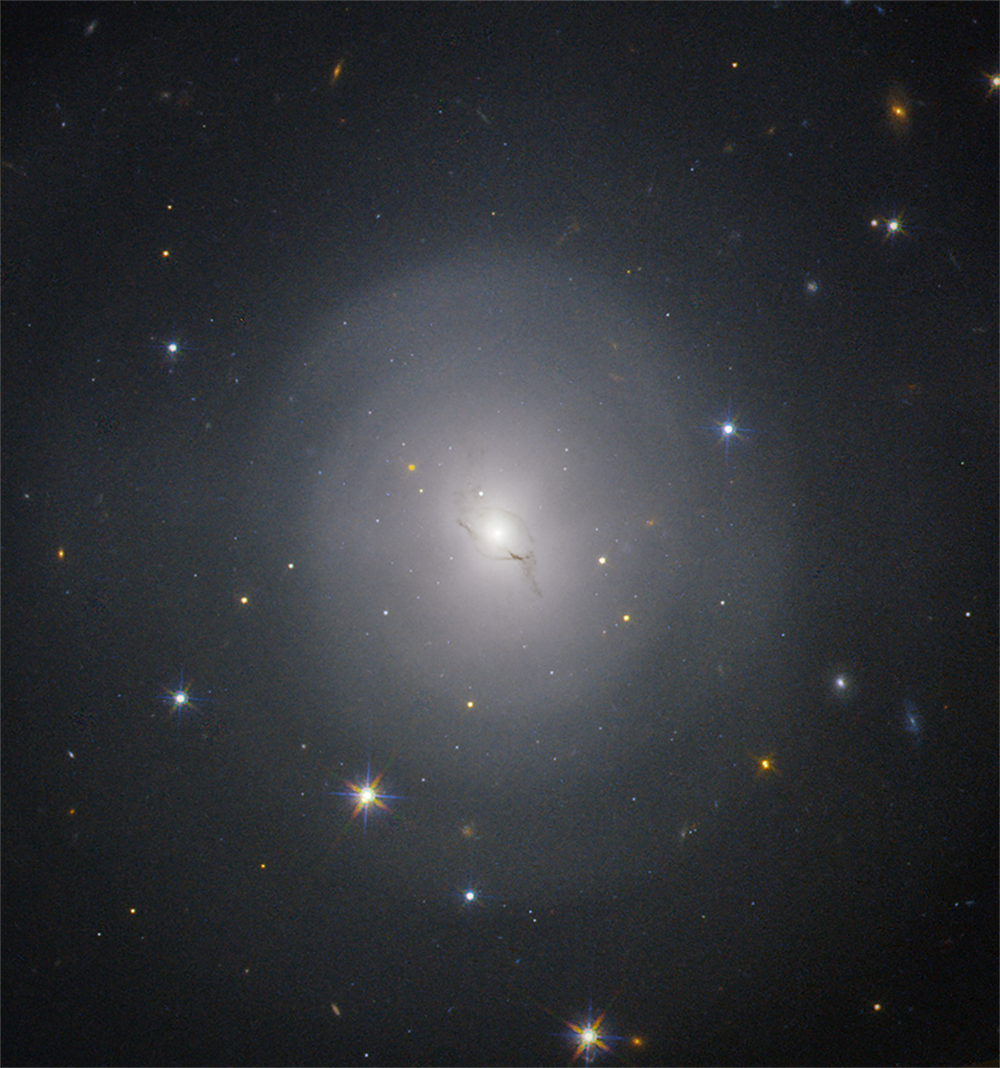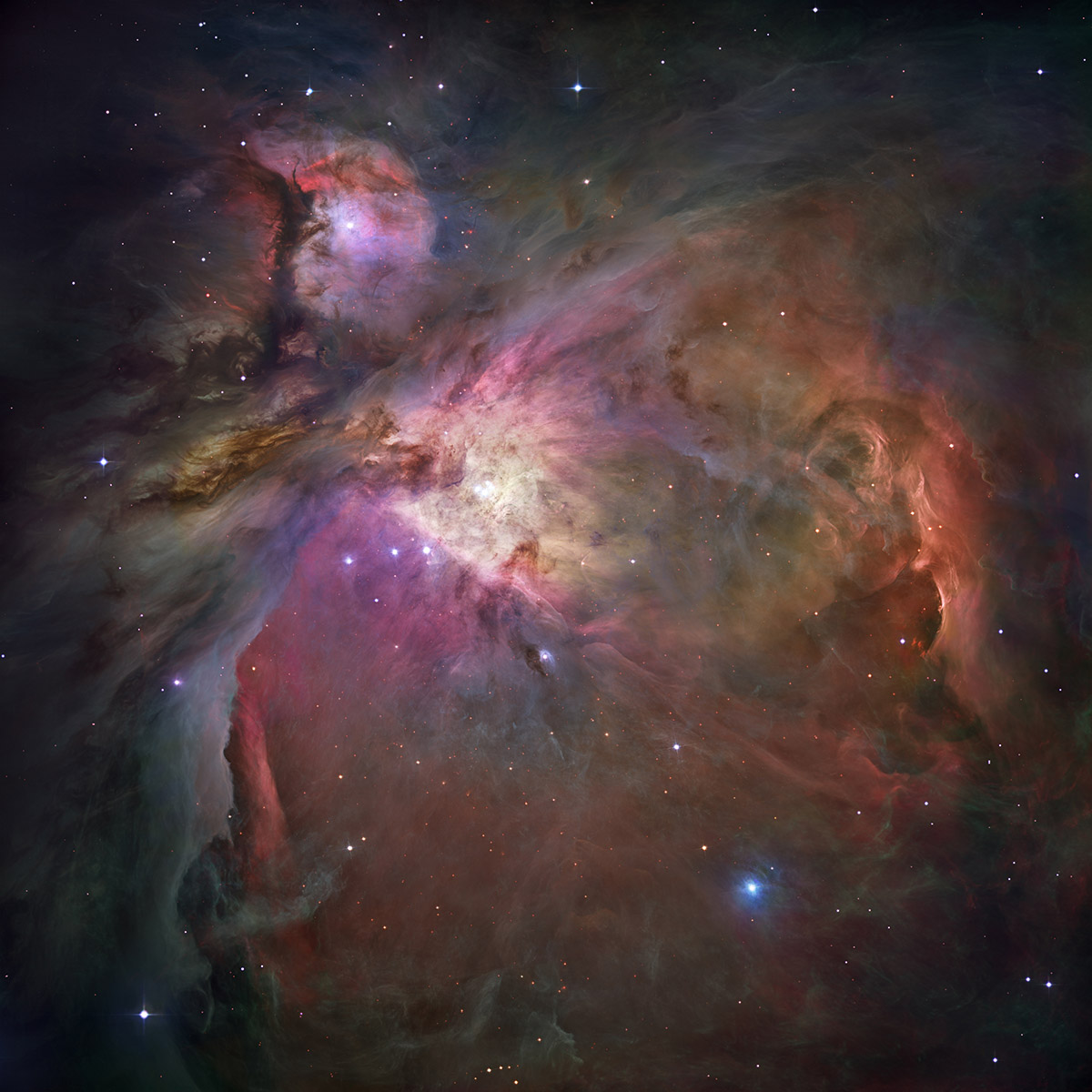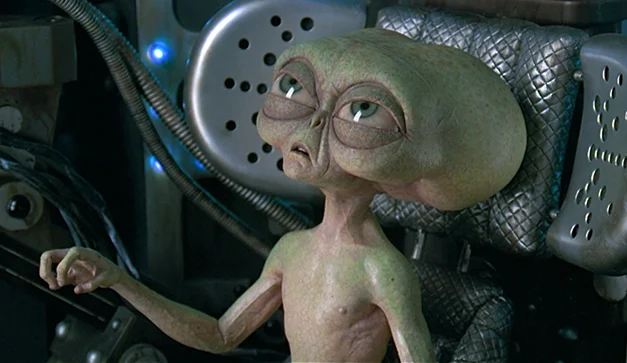Pues destapada la página conmigo y con #32
La misma imagen en días diferentes 
La materia oscura es una forma invisible de materia que representa la mayor parte de la masa del universo. El Hubble no puede ver la materia oscura directamente. Los astrónomos dedujeron su ubicación analizando el efecto de las lentes gravitacionales, en las que la luz de las galaxias situadas detrás de Abell 1689 se ve distorsionada por la materia que interviene en el cúmulo.
Los investigadores utilizaron las posiciones observadas de 135 imágenes con lente de 42 galaxias de fondo para calcular la ubicación y la cantidad de materia oscura del cúmulo. Superpusieron un mapa de estas concentraciones de materia oscura inferidas, coloreado en amarillo, sobre una imagen del cúmulo tomada por la Advanced Camera for Surveys del Hubble.
Será seguramente por eso que se tomó más de 3 días en realizar la imagen final. 
Aprovecho para poner mi imagen, bastante sosilla:
11 de Mayo (2002)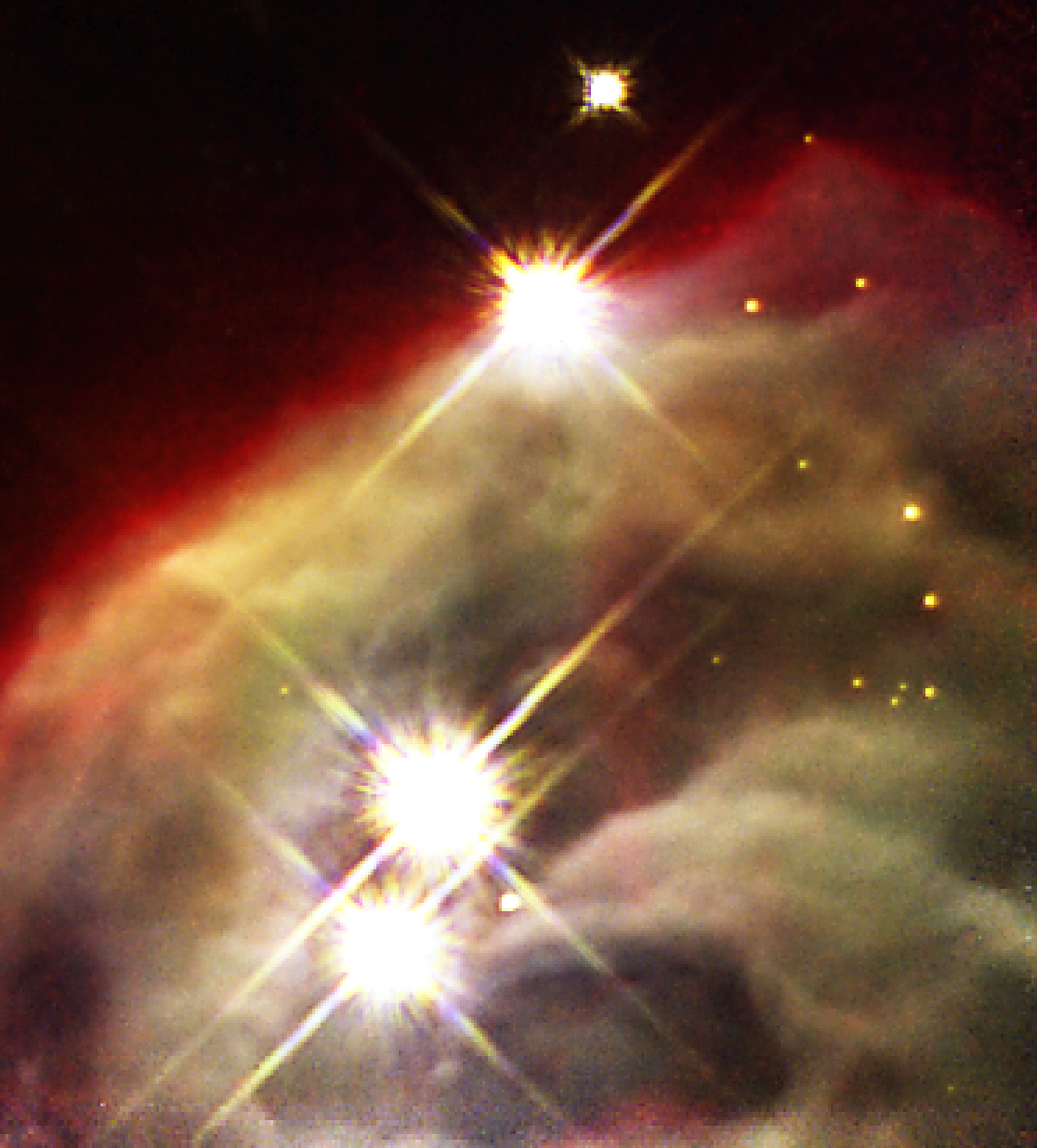
Nebulosa del Cono
Esta imagen muestra la punta de la Nebulosa del Cono, una región de formación estelar en la constelación de Monoceros. Este pilar cónico se extiende a lo largo de siete años luz y es sólo una pequeña porción de un complejo de formación estelar mucho mayor.
